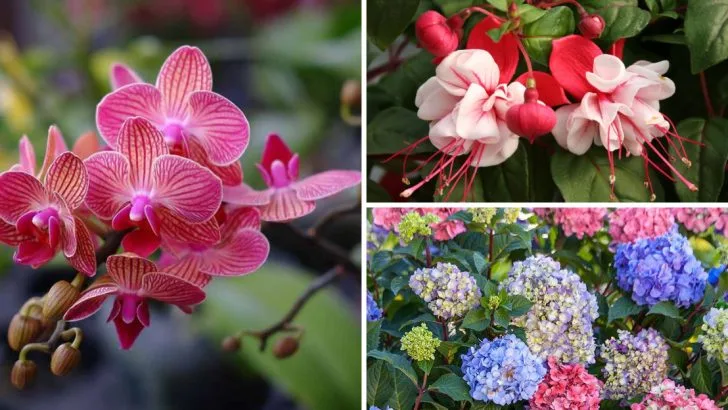Spring is exciting, but it can also be unpredictable—one day it’s all sunshine and new growth, the next it’s frost warnings and gusty winds. And while most plants bounce back just fine, some need a little more attention during this transition. These are the ones that might sulk if temperatures swing too fast or if the soil stays soggy a bit too long.
Some plants are just a little more particular, and that’s okay. Knowing which ones need a gentler hand can save you a lot of frustration later. From delicate blooms to slow-to-wake perennials, the 16 plants on this list tend to need some extra care in the early part of the season—but give them what they need, and they’ll pay you back with a solid show once they’re settled.
Orchid

Orchids, with their ornate and exquisite blooms, are the epitome of fragile beauty. These plants thrive in humid conditions and need indirect sunlight to flourish. Their roots require careful watering, allowing them to dry out before the next drink.
As one of the most popular houseplants, orchids symbolize elegance and require the right balance of light and water to bloom. A well-draining potting mix is essential, and fertilizing every couple of weeks encourages vibrant blooms.
Remember, keeping an orchid happy is all about creating a stable environment where it can truly shine.
Fuchsia

Fuchsias are known for their vibrant and dangling flowers that resemble ballerinas in motion. These plants adore cool and partially shaded environments, making them perfect for hanging baskets on a shaded porch.
Regular watering is a must, yet be cautious not to drown them. The soil should remain moist but not soggy to prevent root rot.
Fuchsias thrive with a little extra care, needing occasional pruning to encourage new growth and more blooms. Their delicate nature rewards gardeners with cascades of colorful flowers that dance in the breeze.
Begonia
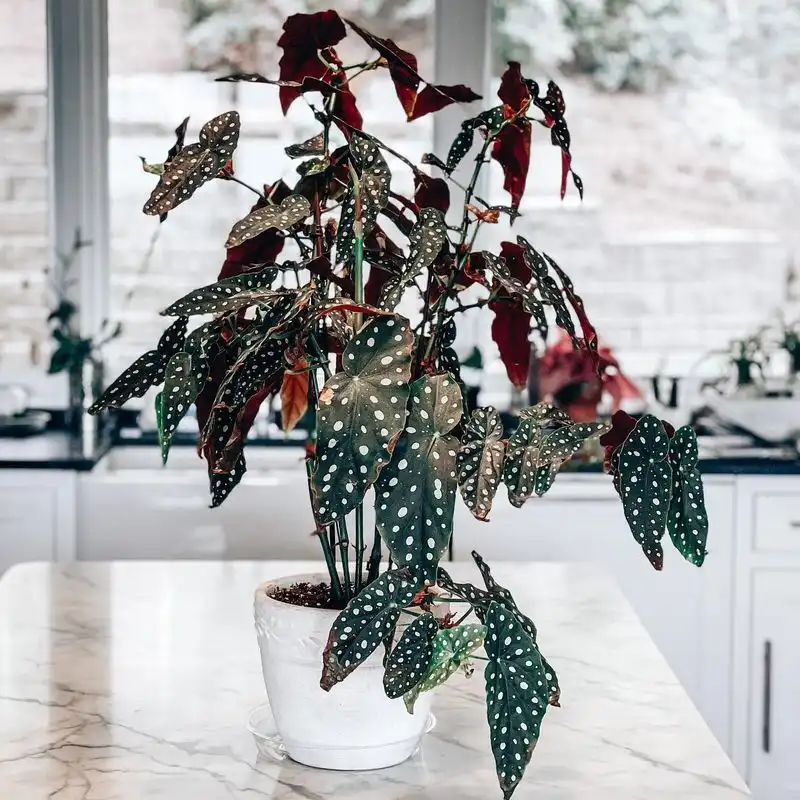
Begonias, with their striking foliage and vivid blooms, are a gardener’s delight. These plants prefer dappled sunlight and well-drained soil, making them perfect for shaded garden corners or patios.
To keep begonias happy, it’s important to water them regularly but avoid waterlogged soil. Their leaves can be sensitive, so handle with care to avoid bruising.
Fertilizing regularly during their growing season will help these beauties flourish. Begonias are a testament to the vibrant life that a little extra care can bring to any garden setting.
Calathea

Calatheas are celebrated for their stunning foliage, featuring intricate patterns and vibrant colors. These plants thrive indoors, preferring low light and high humidity.
Regular misting and a stable environment can keep them looking their best. Avoid direct sunlight, which can scorch their delicate leaves, and opt for distilled water to prevent leaf spots.
Calatheas bring a touch of the tropics to any interior and are a favorite for those looking to add a splash of greenery with minimal light.
Gardenia
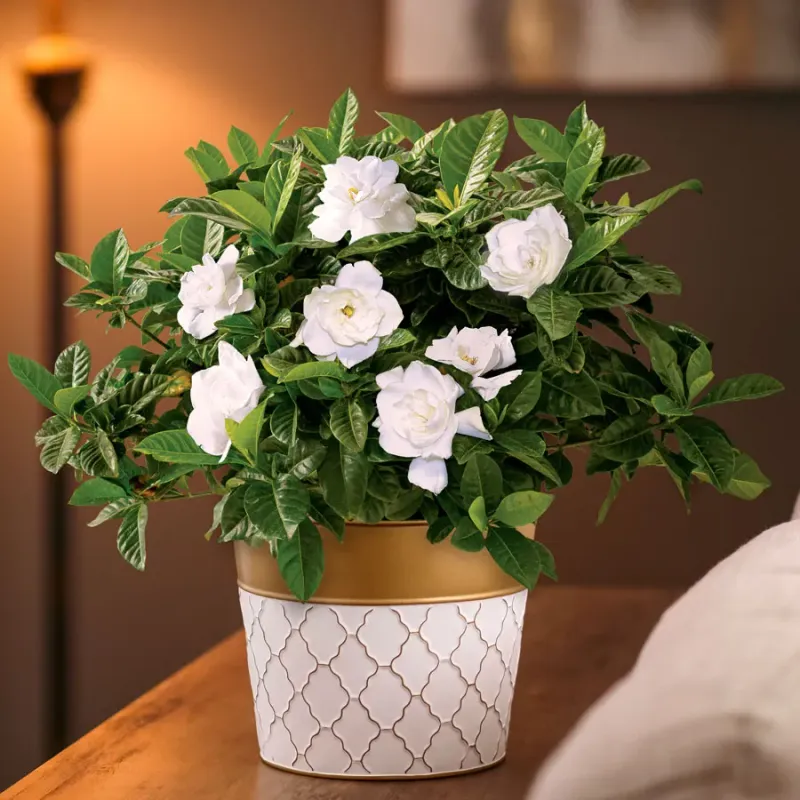
Few plants rival the intoxicating fragrance of gardenias. These elegant shrubs demand attention with their creamy white blooms and glossy green leaves.
Gardenias thrive in acidic soil and require plenty of sunlight, but not harsh afternoon rays. They’re fond of humidity, so misting can help maintain the moisture they crave.
Providing gardenias with the right nutrients through careful fertilization will enhance their blooms and fragrance, offering a rewarding experience for the senses.
Jasmine
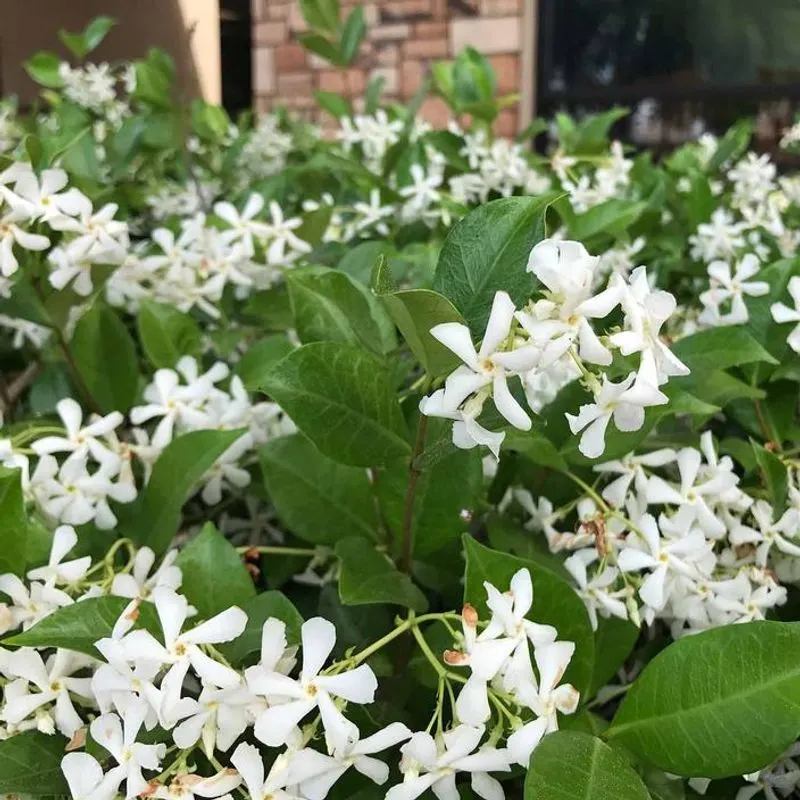
Jasmine is renowned for its delicate, star-shaped blossoms and enchanting scent. This climbing plant loves sunny spots where it can bask in the warmth while spreading its fragrance.
Regular watering during dry spells and a trellis for support can keep jasmine thriving. Pruning after flowering encourages bushy growth and more blooms.
Ideal for creating fragrant garden arches or fences, jasmine adds a romantic touch to any outdoor space, captivating with its aromatic allure.
Peace Lily
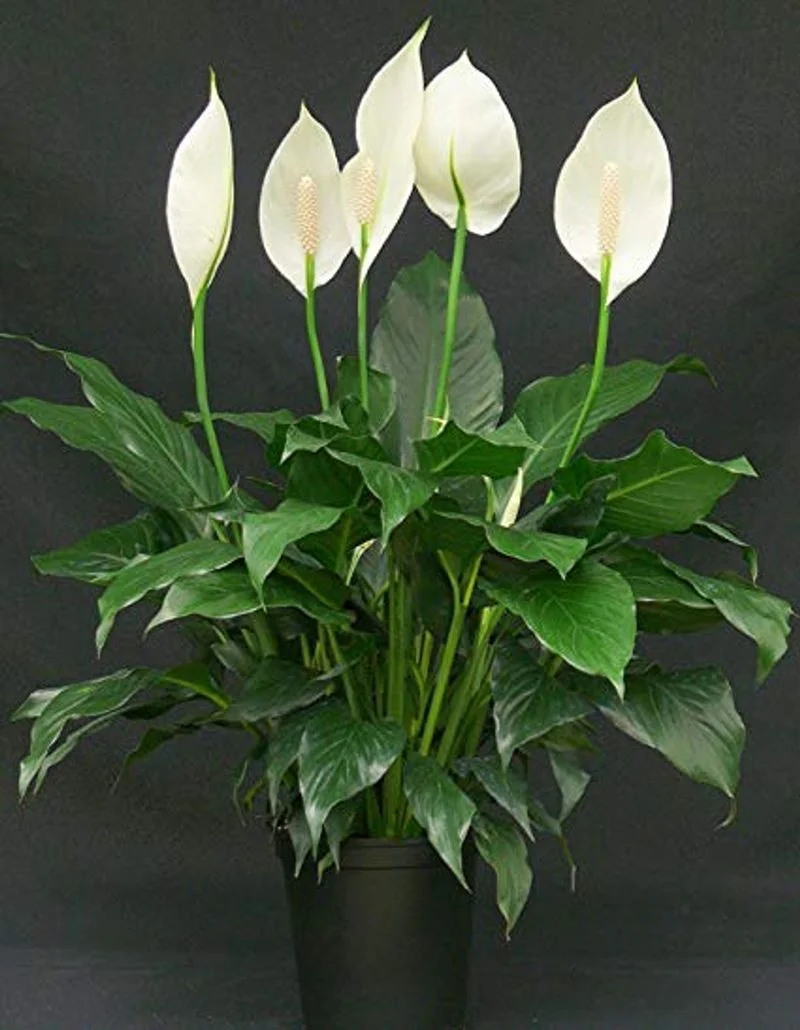
The peace lily, with its graceful white flowers and lush foliage, is a beloved indoor plant. It thrives in low light and is forgiving if you miss a watering now and then.
This plant purifies the air while adding a touch of serenity to any room. Keep the soil moist but not waterlogged, and it will reward you with blooms throughout the year.
The peace lily’s low-maintenance nature makes it an excellent choice for those seeking beauty without the fuss.
Hydrangea

Hydrangeas are a favorite for their large, colorful blooms that can range from blue to pink depending on the soil pH. They thrive in well-drained soil and need regular watering, especially in dry spells.
These shrubs prefer morning sun and afternoon shade to protect their delicate blooms from harsh rays. Pruning spent flowers encourages new growth and maintains their shape.
Hydrangeas make for excellent cut flowers, bringing the charm of an English garden to vases and tables alike.
Fern

Ferns, with their feathery fronds and lush greenery, are a classic choice for shaded gardens. These plants love humidity and indirect light, making them perfect for adding greenery in darker corners.
Regular misting and watering keep ferns happy, and they thrive in well-draining soil. Avoid direct sunlight as it can scorch their leaves.
Ferns bring a sense of tranquility and a touch of nature’s elegance indoors or out, flourishing with just a little extra humidity care.
Azalea
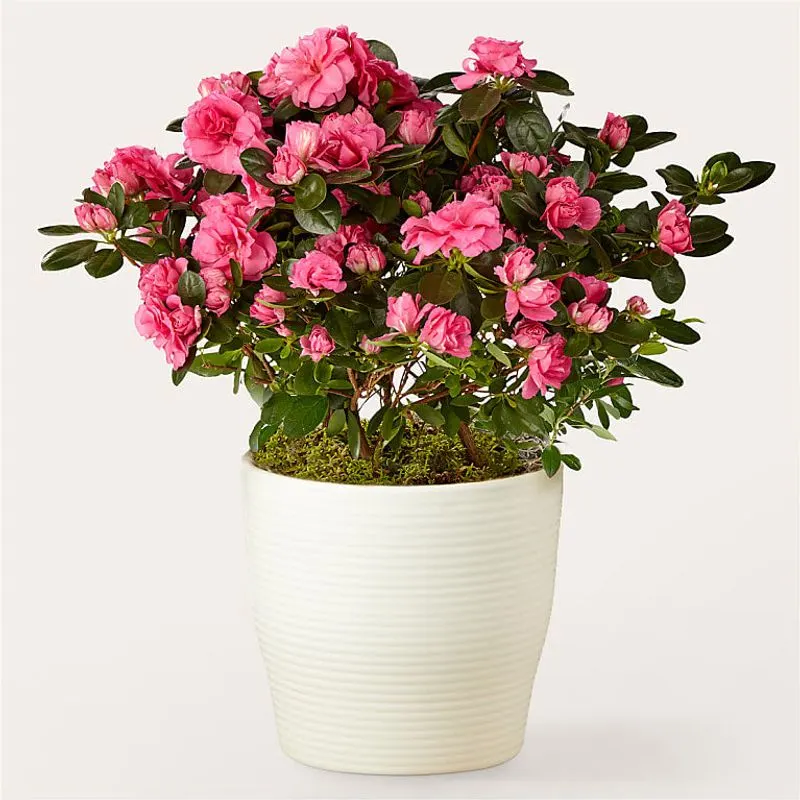
Azaleas captivate with their stunning blossoms in shades of pink, red, and white. These shrubs prefer acidic soil and a sheltered spot with dappled light.
Regular watering is essential, especially during dry spells, to maintain their vibrant blooms. Pruning after flowering helps shape the plant and encourages more growth.
Azaleas offer bursts of color in spring, making them a delightful choice for gardens seeking a splash of seasonal vibrancy.
Lavender
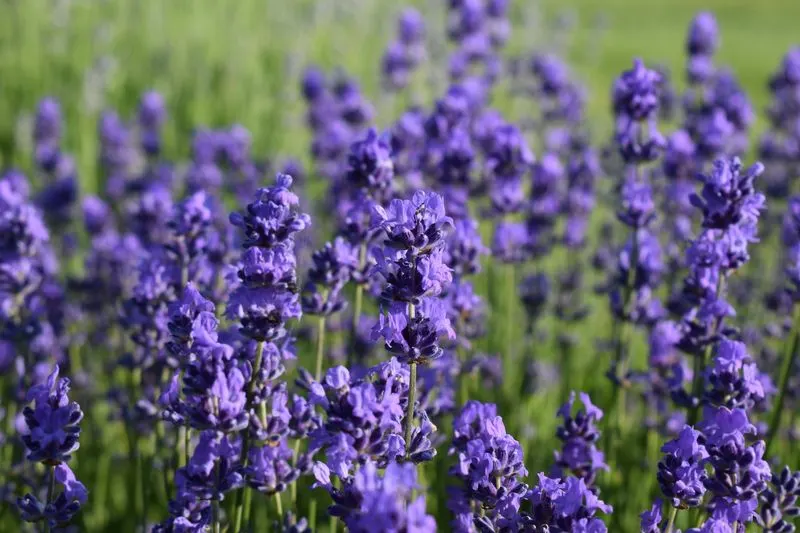
Lavender, with its signature purple spikes and soothing aroma, is a staple in sunny gardens. This plant loves full sun and well-drained soil, making it drought-tolerant and relatively easy to grow.
Regular pruning after flowering keeps lavender bushy and encourages more blooms. Its fragrance attracts bees and butterflies, enhancing the biodiversity of your garden.
Lavender can be harvested for its essential oils or used in crafts, offering both ornamental and practical uses.
African Violet
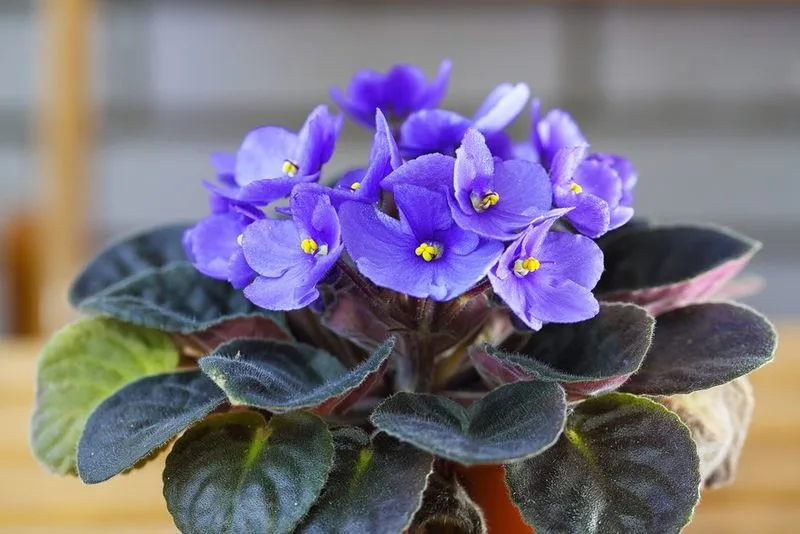
African violets, with their fuzzy leaves and vibrant blooms, are indoor favorites. They thrive in bright, indirect light and prefer to be watered from the bottom to avoid leaf spots.
These plants do well in a warm environment where they can bloom continuously with proper care. A special potting mix helps prevent root rot and supports healthy growth.
African violets are perfect for windowsills, adding a splash of color to your indoor spaces all year round.
Hibiscus

Hibiscus plants are known for their spectacular flowers and tropical flair. They thrive in full sun and well-drained soil, making them ideal for warm climates.
Regular watering, especially during peak growth, ensures they remain vibrant. Pruning encourages bushy growth and more prolific blooms.
Hibiscus flowers are not only beautiful but also edible, often used in teas and culinary dishes. Their exotic appeal makes them a garden favorite.
Camellia
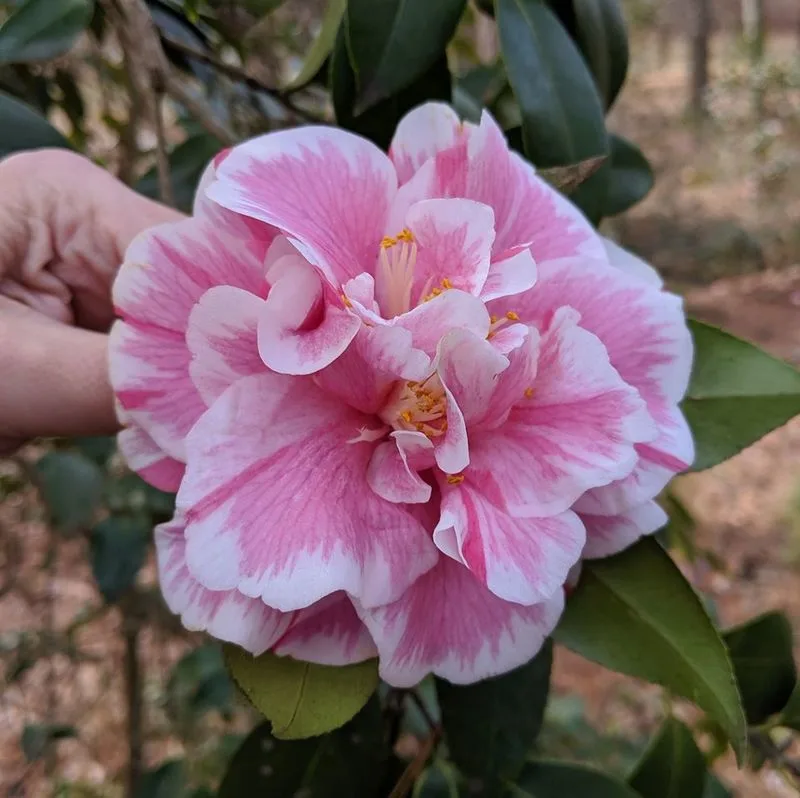
Camellias are prized for their stunning blooms and lush foliage. These shrubs thrive in acidic, well-drained soil and prefer morning sun with afternoon shade.
Regular watering during dry spells is crucial, and mulching helps retain soil moisture. Pruning after blooming keeps them in shape and encourages new growth.
With their elegant flowers, camellias bring a touch of sophistication to any garden, blooming in winter and spring when other plants are dormant.
Bougainvillea

Bougainvilleas are famous for their colorful bracts and vigorous growth. They love full sun and well-draining soil, making them drought-tolerant and perfect for tropical settings.
Pruning is key to maintaining their shape and encouraging blooms. Despite their tough nature, young plants need regular watering until established.
Bougainvilleas transform walls and fences into vibrant canvases, adding a touch of the Mediterranean to any space. Their bold colors create a striking visual impact.
Moonlit Marshmallow Fern
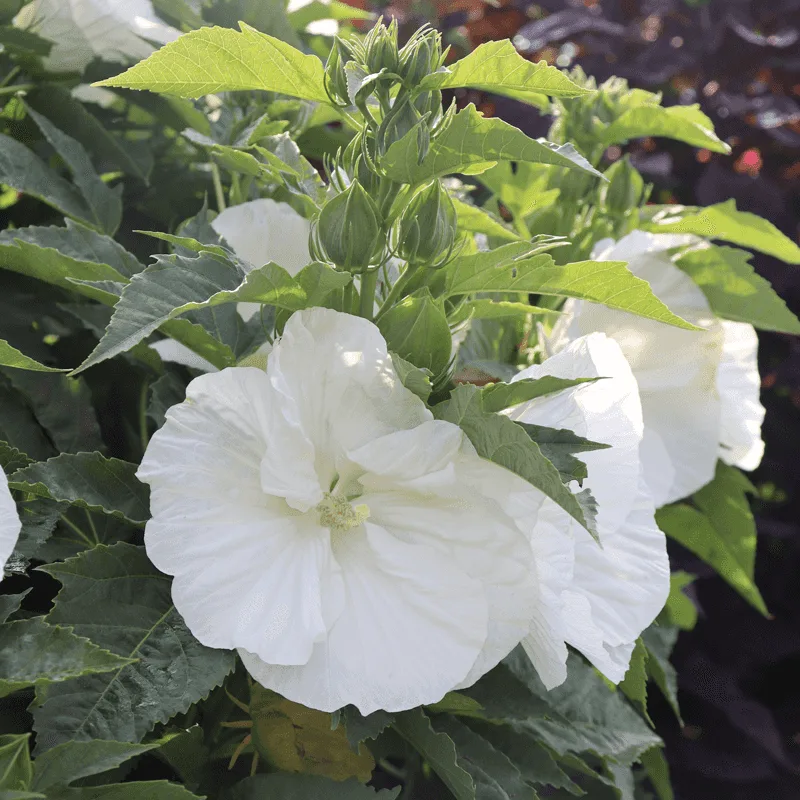
Imagine a plant that looks like it was plucked straight from a fairytale; the Moonlit Marshmallow Fern does just that. Its soft, silvery fronds shimmer like moonbeams, creating a dreamlike atmosphere in any garden. Despite its ethereal beauty, this fern demands precise humidity levels and indirect light to truly sparkle.
In the spring, as the temperature rises, maintaining a consistent environment becomes crucial. A slight dip in humidity might lead this delicate plant to wither.
To ensure its well-being, consider placing it near a humidifier or in a terrarium, where its enchanting allure can be preserved.

